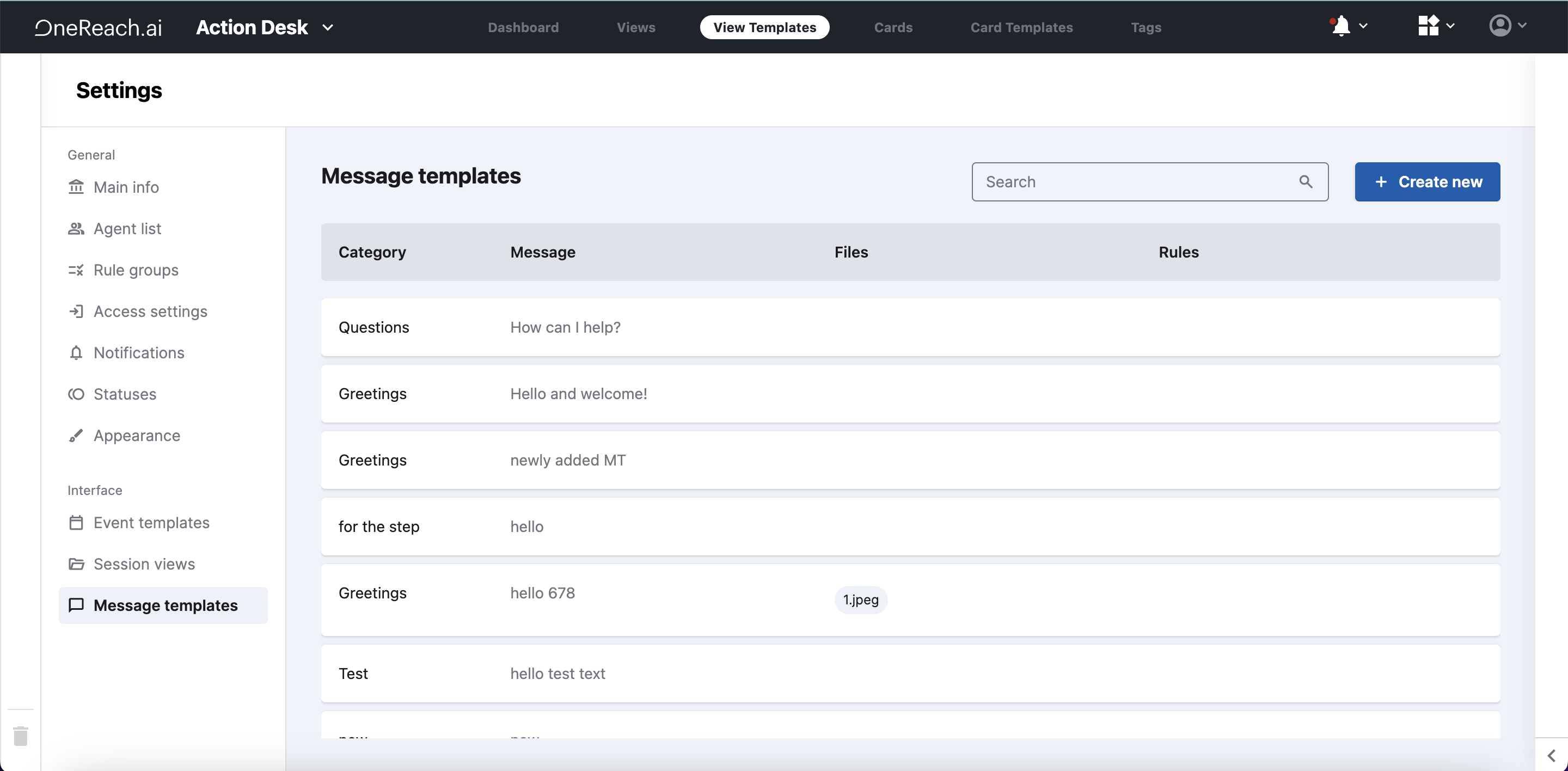[HitL] Settings overview
The [HitL] Settings View is accessible to users with admin-level permissions. For instance, if you're an agent manager, you can adjust settings here that will apply to all agents under your account in the [HitL] Agent UI. Download the [HitL] Settings View from Action desk to start configuring it. You can find the instructions on how to do that here.
Main info
Voice & call settings
If you don't require the Voice functionality, you can optimize the Agent UI loading time by disabling the Voice & call settings, effectively turning off the voice client support. For information on how to change voice settings, refer to this link.
Data clean-up
Enabling the Data clean-up can benefit clients managing large volumes of data or clients with legal obligations on data retention periods. This feature deletes HitL session data iteratively after a specified time. For instance, if you set the clean-up interval to two weeks, the system will automatically delete data every two weeks. This helps in maintaining optimal system performance by preventing data overload. You can find instructions on enabling data clean-up here.
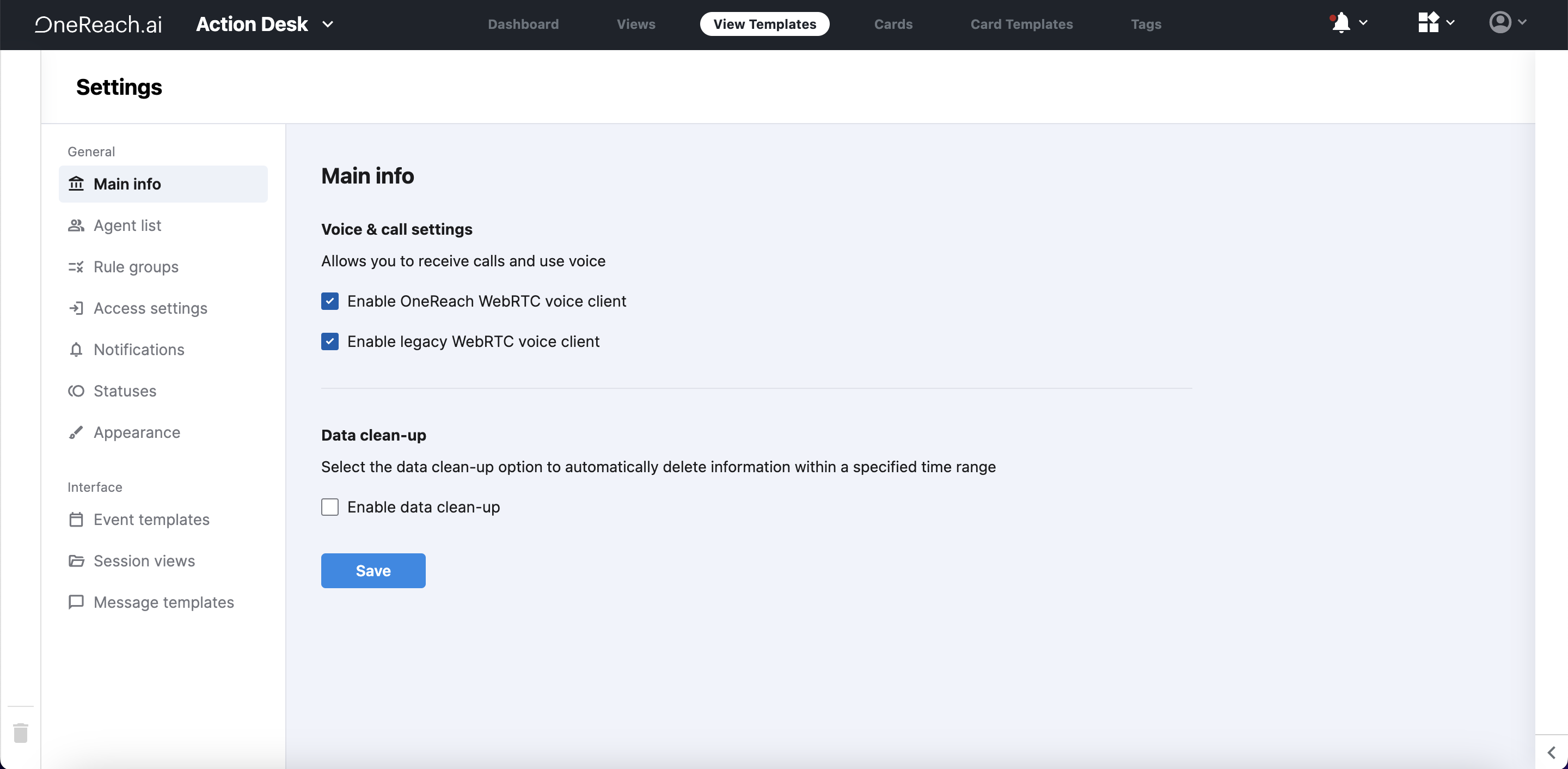
Agent list
The Agent List displays all the user-agents associated with your account. From this page, you can:
- Adjust agents' metadata (for example, for the purposes of routing/reporting/segregating agents into different groups)
- Search for agents based on their name, status, or Rule group
The page also provides live status tracking, which means the current status of each agent is updated in real-time without the need to refresh the page.
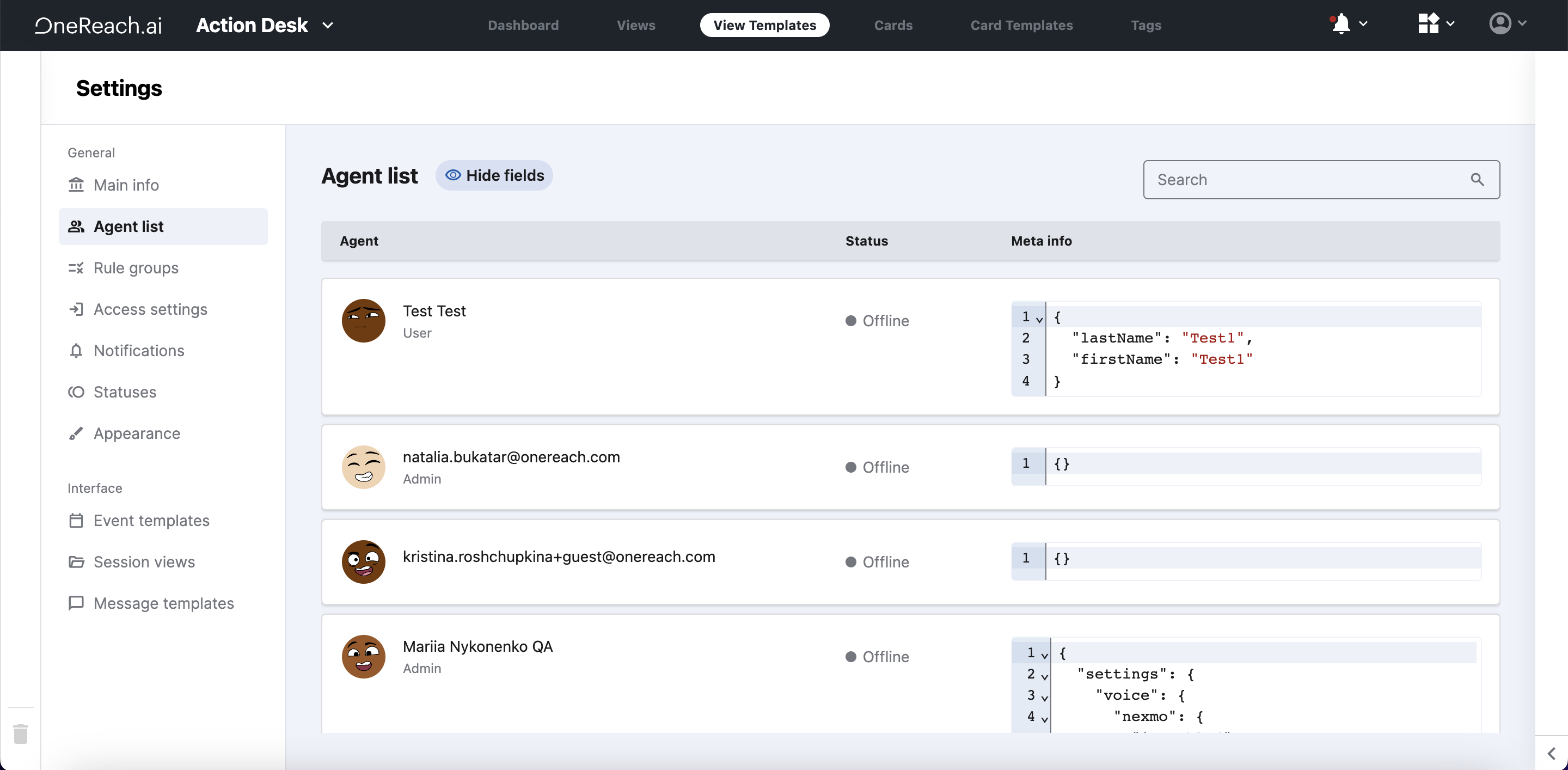
Rule groups
The Rule group represents a collection of rules, based on tags, that determine which conversations agents can view and engage with. You need to have at least one Rule group enabled, otherwise, agents won't get assigned to groups and see any conversations. From this page, you can create new Rule groups and define rules for them using tags. Tags in the rules should always start with one of the following “modifier” symbols: |, &, !:
Pipe symbol
|(for example,|voice): if a rule carries a tag that begins with this symbol, an agent belonging to that group can view the conversation tagged with that tag.Exclamation mark
!(for example,!text): this modifier hides conversations. If a rule carries this tag modifier, then an agent belonging to that group will never be able to see the conversation tagged with that tag.Ampersand
&(for example,&rwc): if a rule carries this tag modifier, then for an agent belonging to that group to see a conversation, it must contain that tag necessarily.
For example, an agent belonging to a Rule group with the following rules |voice !sms is able to interact with voice sessions, but not sms sessions. For detailed instructions on how to create and add Rule groups, follow this link.
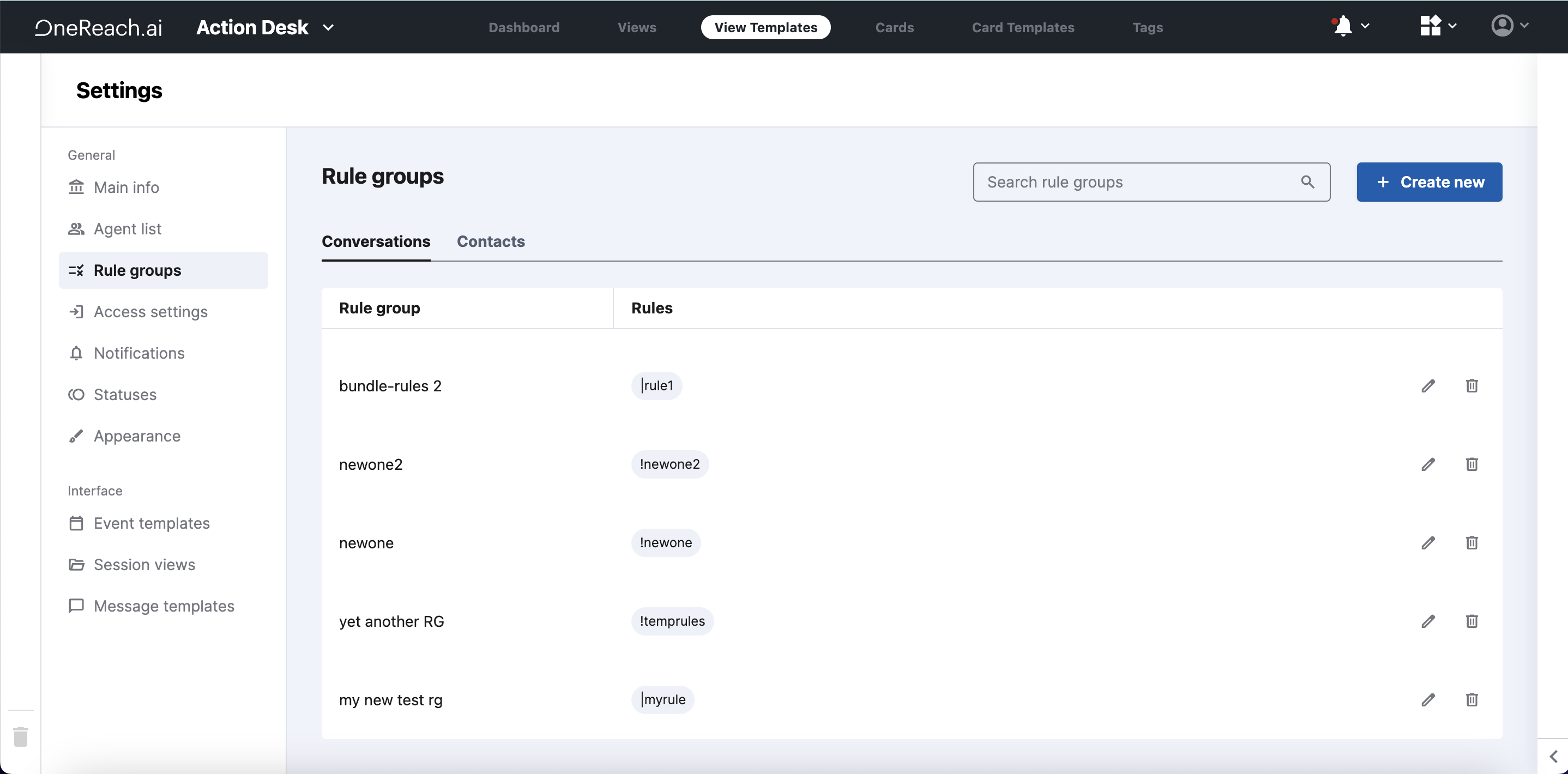
Access settings
Conversations
On this page, you can assign agents to the Rule groups you've created under the Rule groups tab to determine which conversations agents can view and engage with. You can search for agents based on their name or Rule group.
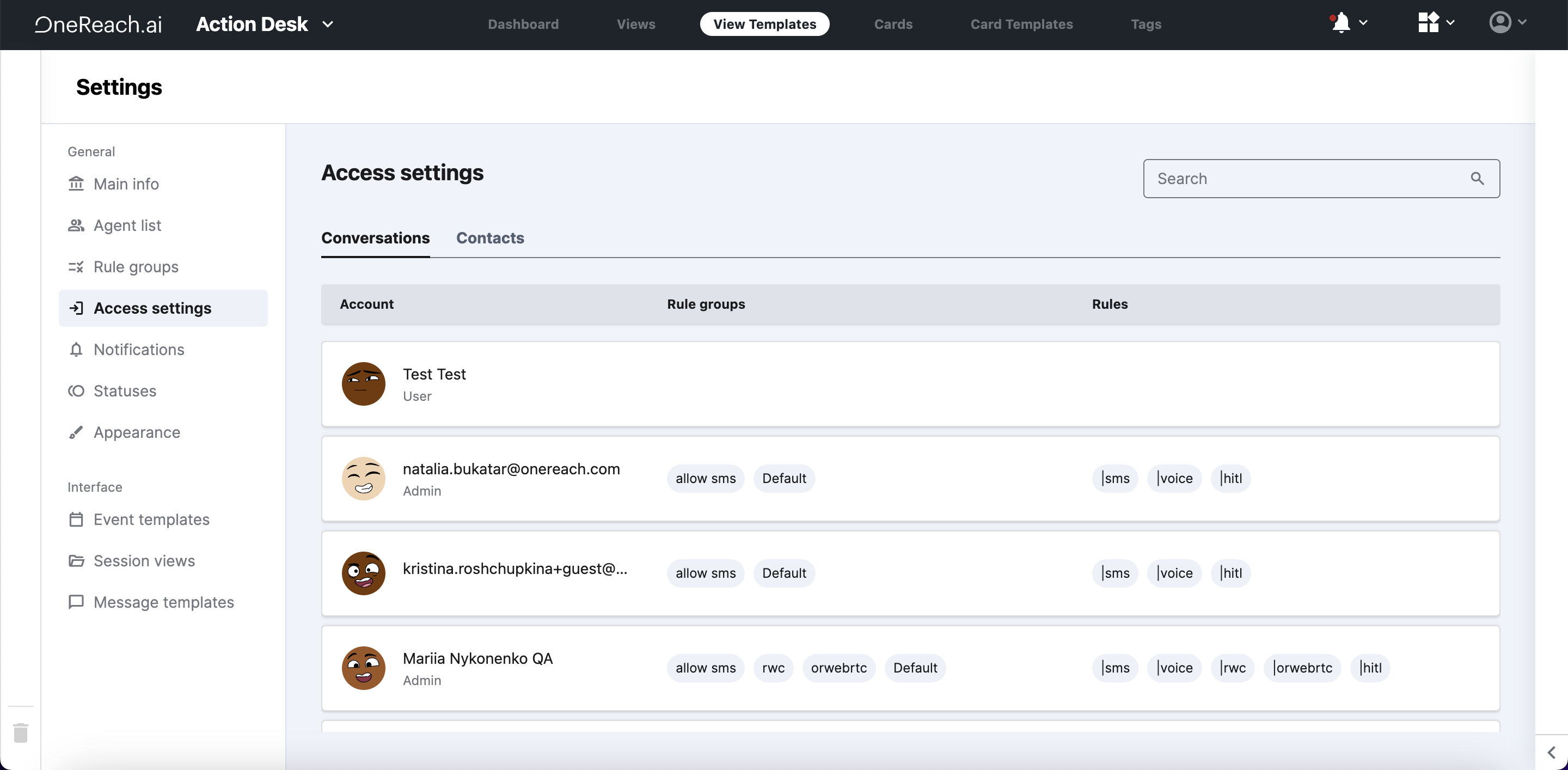
Contacts
If your business logic necessitates specific agents interacting with certain users, you can enable this option by setting Contact visibility tags from this page. For instance, you might trust certain agents to handle returning users while others manage new users.
Unlike Rule tags, Contact visibility tags do not begin with "modifier" symbols. Note that you must configure the Enable HitL Step correctly to enable contact visibility. You can learn how to do this here.
Note
For an agent to interact with a specific user, both the agent and the user must share the same Contact visibility tags.
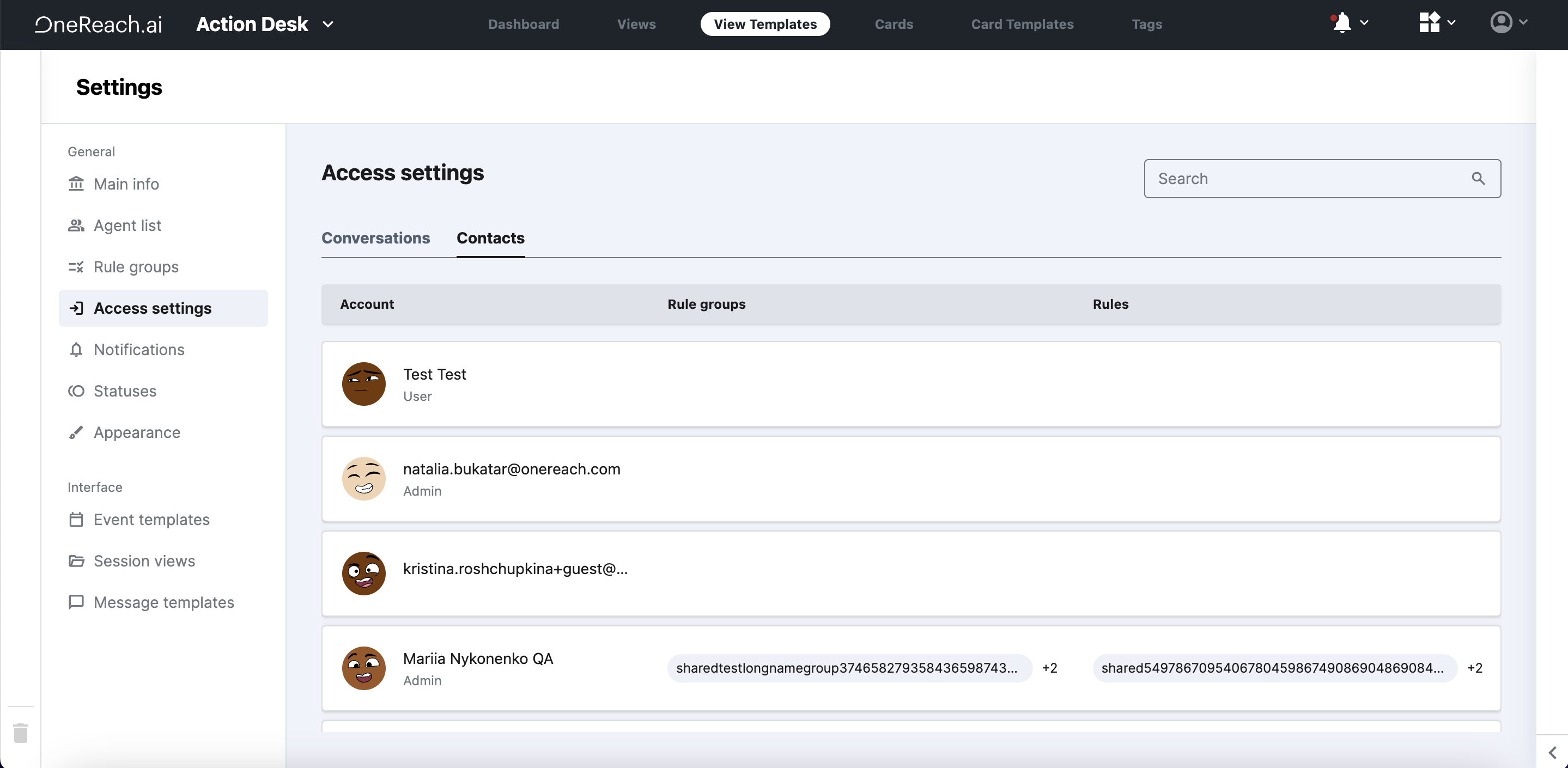
Notifications
Configure the sounds that the Agent UI plays when specific events occur. We recommend enabling notifications for voice or phone-based solutions to ensure quick agent response times.
There are three sound categories:
- Incoming Call: triggers a sound when an agent receives an incoming call
- Needs Assistance: initiates a sound when a session is available for an agent to claim
- Messages: plays when an agent receives an incoming message. You can set this to play always or only when the HitL window is not in focus
Learn how to set notifications and change their sounds.
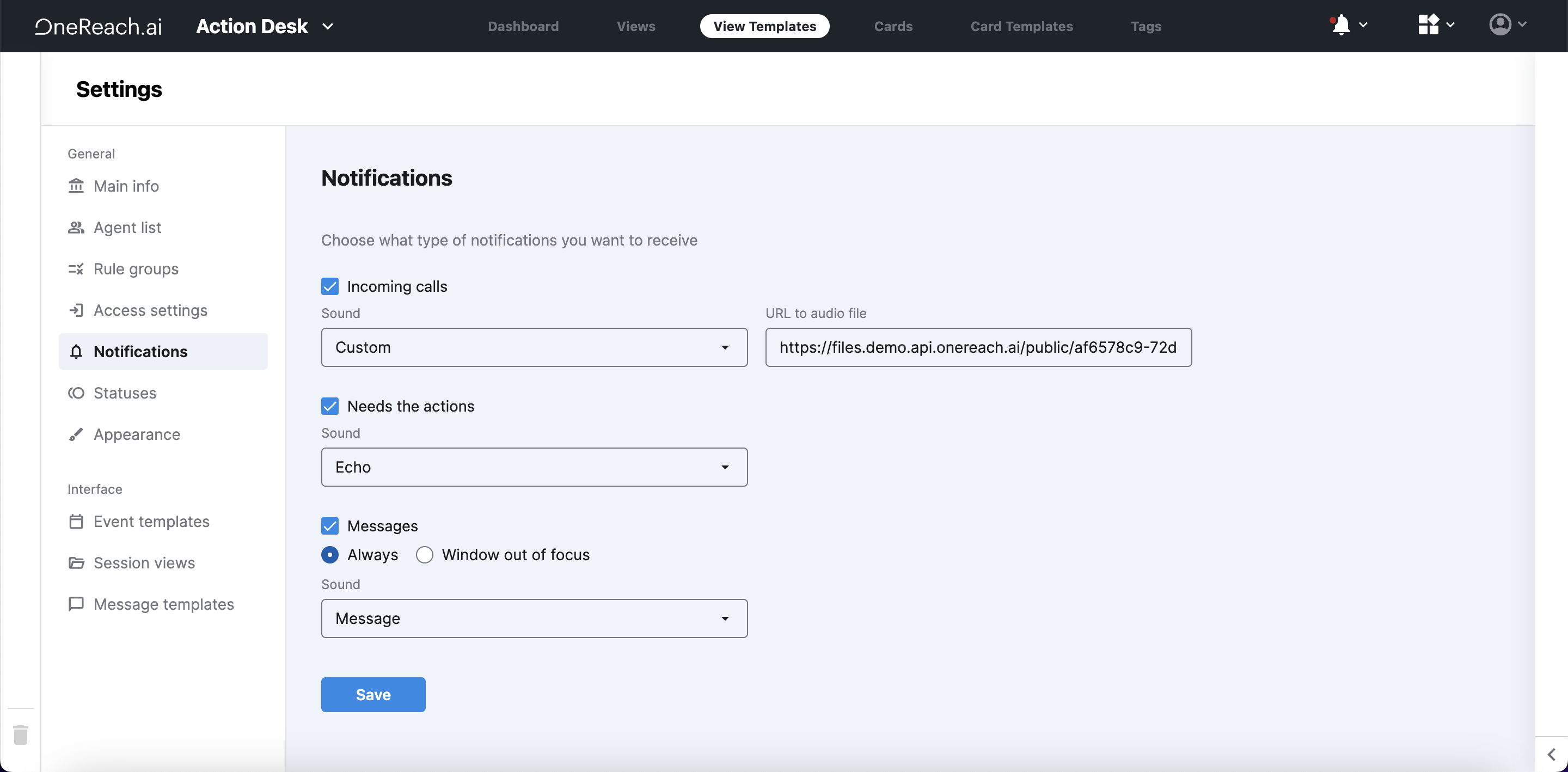
Statuses
Configure the initial agent status that appears when you launch the Agent UI and extend the default list of available statuses. While there are five default statuses available, you have the flexibility to add more specific variations to the "busy" status, such as "out for lunch" or "be right back", etc. You can further customize the status icon by providing the name of the respective Google Material Icon. Set the duration of inactivity, after which the status will automatically switch to Offline. Additionally, you can specify whether agents can manually select or switch from this status in the Agent UI. Feel free to rearrange the order of the statuses using the drag-and-drop feature.
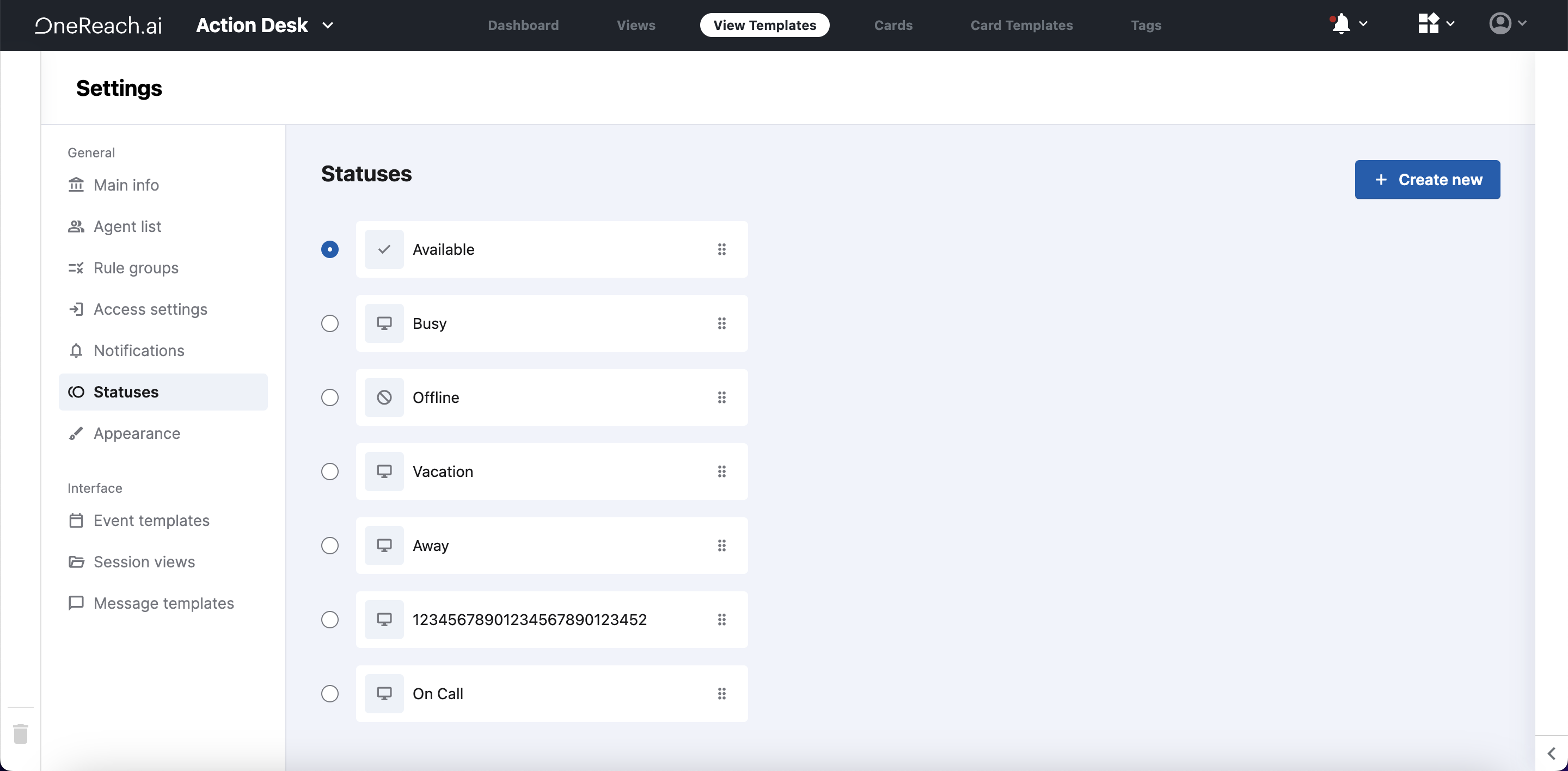
Note
By default, the Require Agent Assistance (HitL) Step in your Flow is set to allow only online (Available) agents to claim conversations. If you wish to change this setting, you need to adjust the configuration of this Step accordingly.
Follow instructions on how to:
Set status
Edit status icon
Set the time when status switches to offline
Create a new status
Allow agents to select the status in the Agent UI
Appearance
Customize the header color and font to display your company logo or to personalize the agents' user experience. Choose the avatar shape and type for your contacts that will appear in the Session list, Voice control pop-up, and Contact Record Management card (CRM). Visit this link to learn how to customize the header and this link - to learn how to change avatar shape and type.
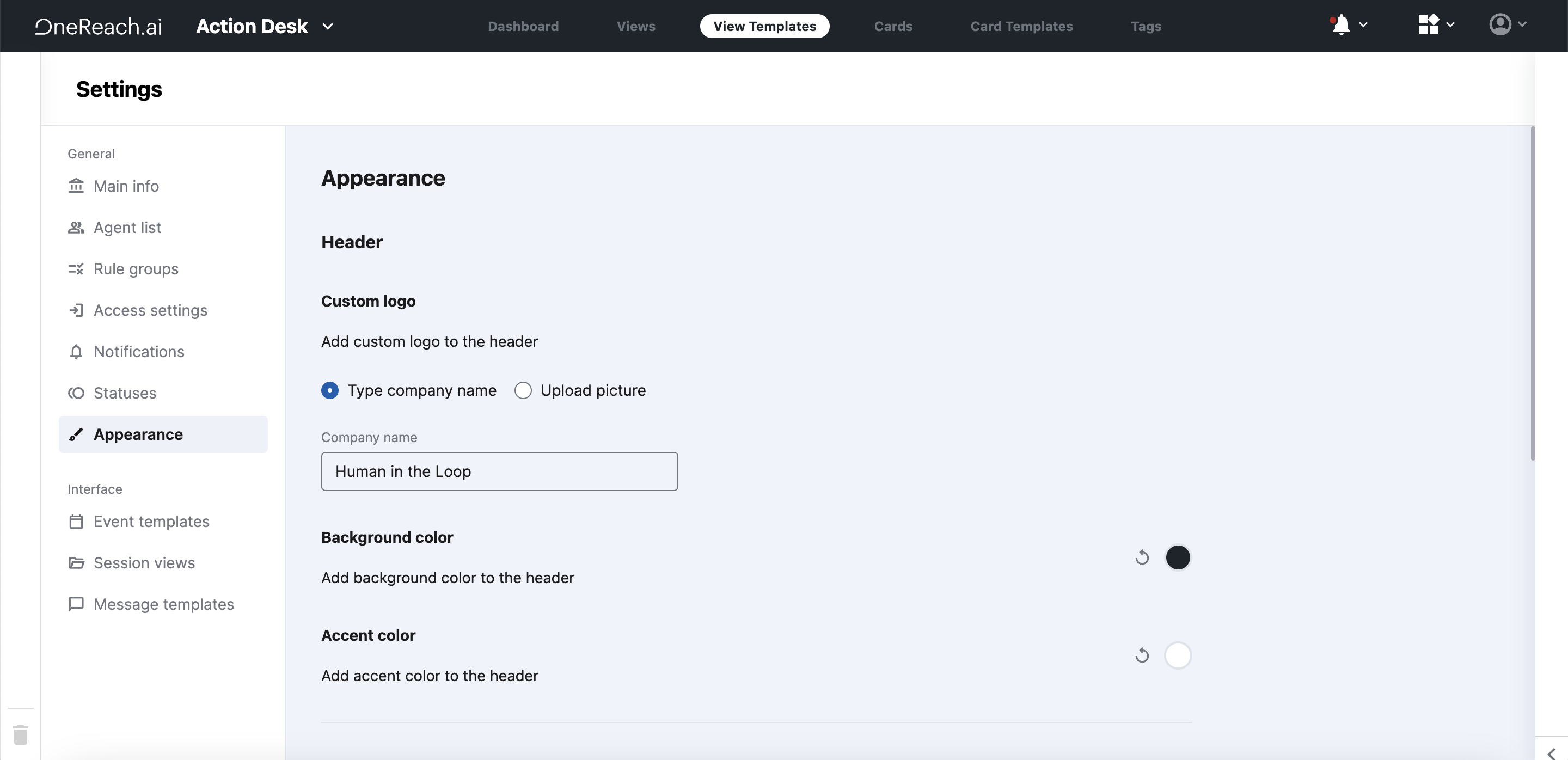
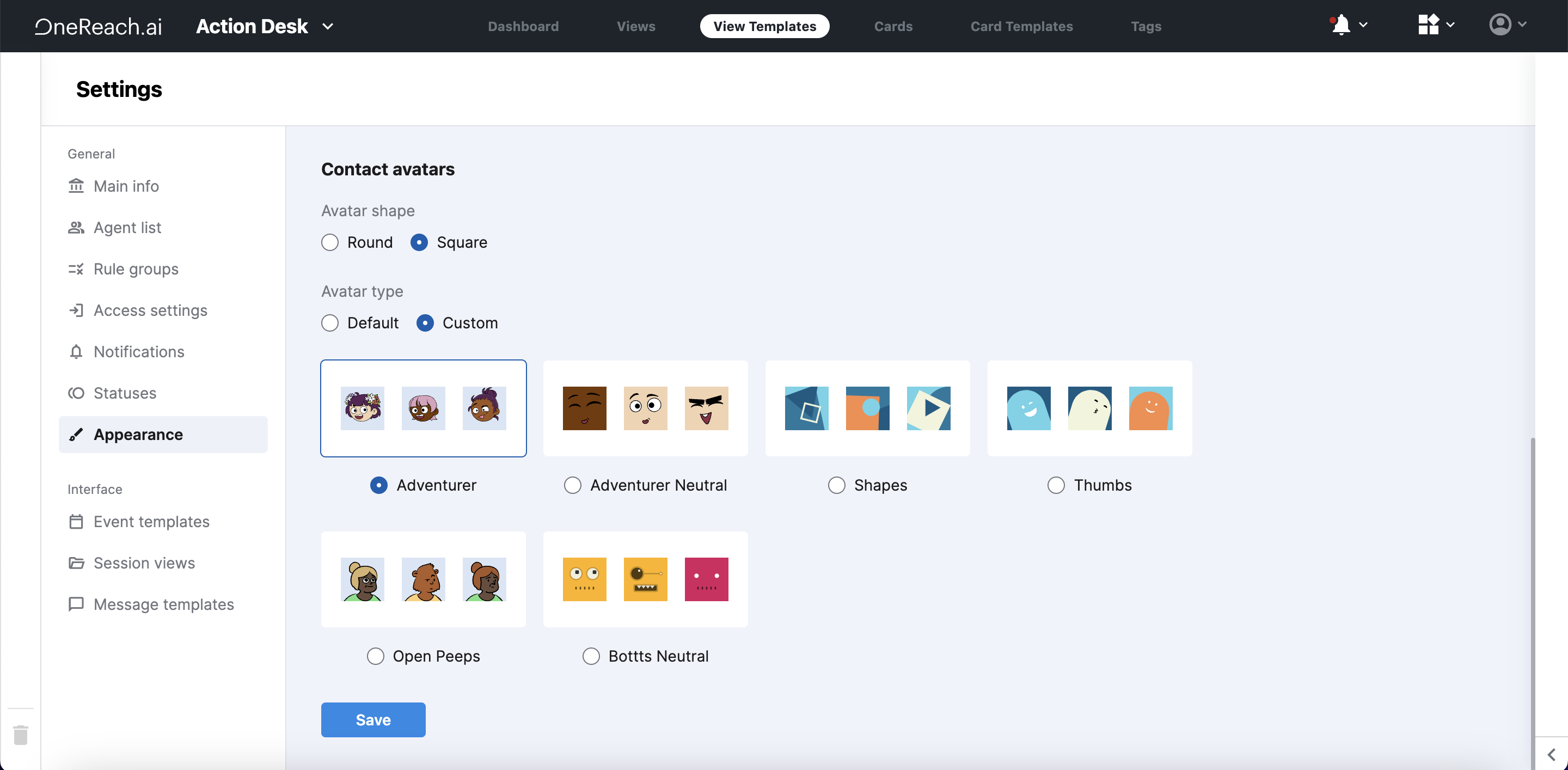
Event templates
The Event templates section allows you to configure how Flow Reporting events are displayed in the Event timeline. By default, this section lists templates for all Events that can be displayed in the Event timeline in their default state. Every Step in the Flow during its execution produces a Reporting event. In essence, a Step performs an action and subsequently logs relevant information, such as what occurred, where it happened, and when it took place, using javascript objects. Any event can contain media attachments, but for the Transcript event of the message type, it makes the most sense. These attachments can be images or audio files (call recordings, for example). Events can also contain an array of Tags, which you can set in Steps within your Flow in the Reporting section and use in the Event template logic to enrich the Event timeline functionality. To avoid clutter, all Step and non-message voice Transcript events (like Transfer, Call Start, etc.) are hidden from the Event timeline by default.
Expand section to see how Reporting events are displayed in the Agent UI
Session Default has two subtypes - Session start and Session end:
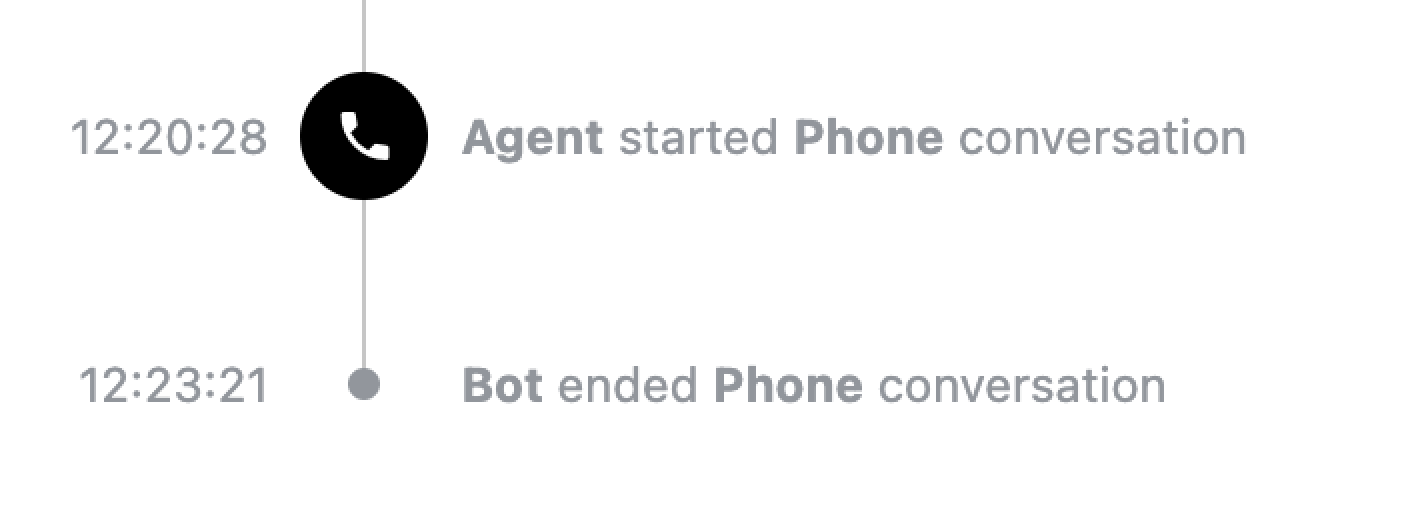
Notification Default has three subtypes - Add/Remove Claimed By, Add/Remove Conversation Tag(s), and Add/Remove Rule Tag(s)

WhisperToAgent Default (marked with ). Its contents can be formatted with Markdown:
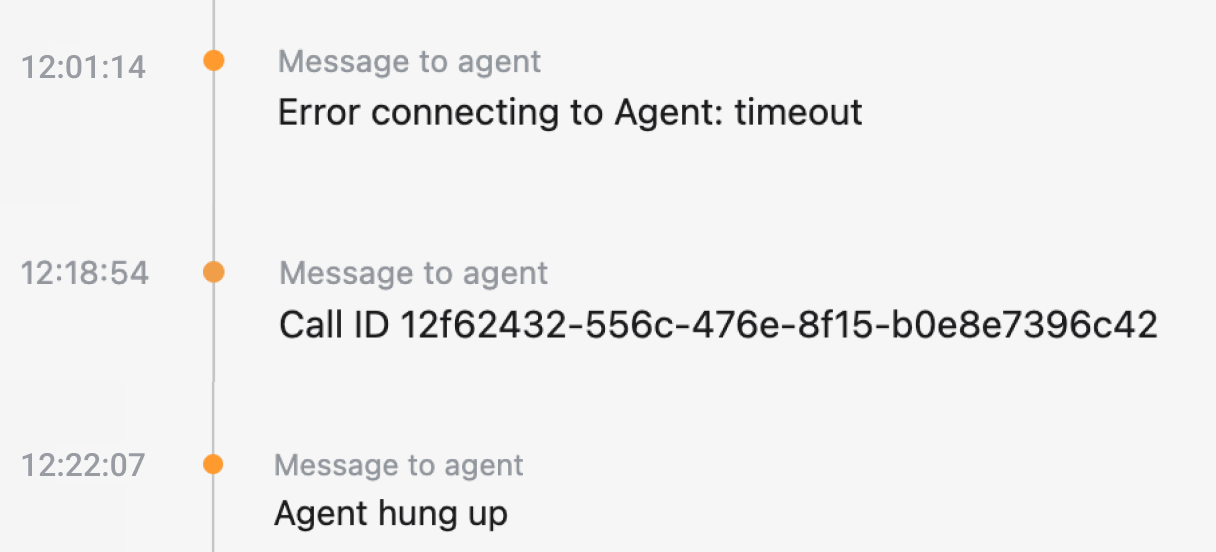
The Transcript event has a number of subtypes. They are marked with (for user) and
(for agent).
Transcript Default (voice):
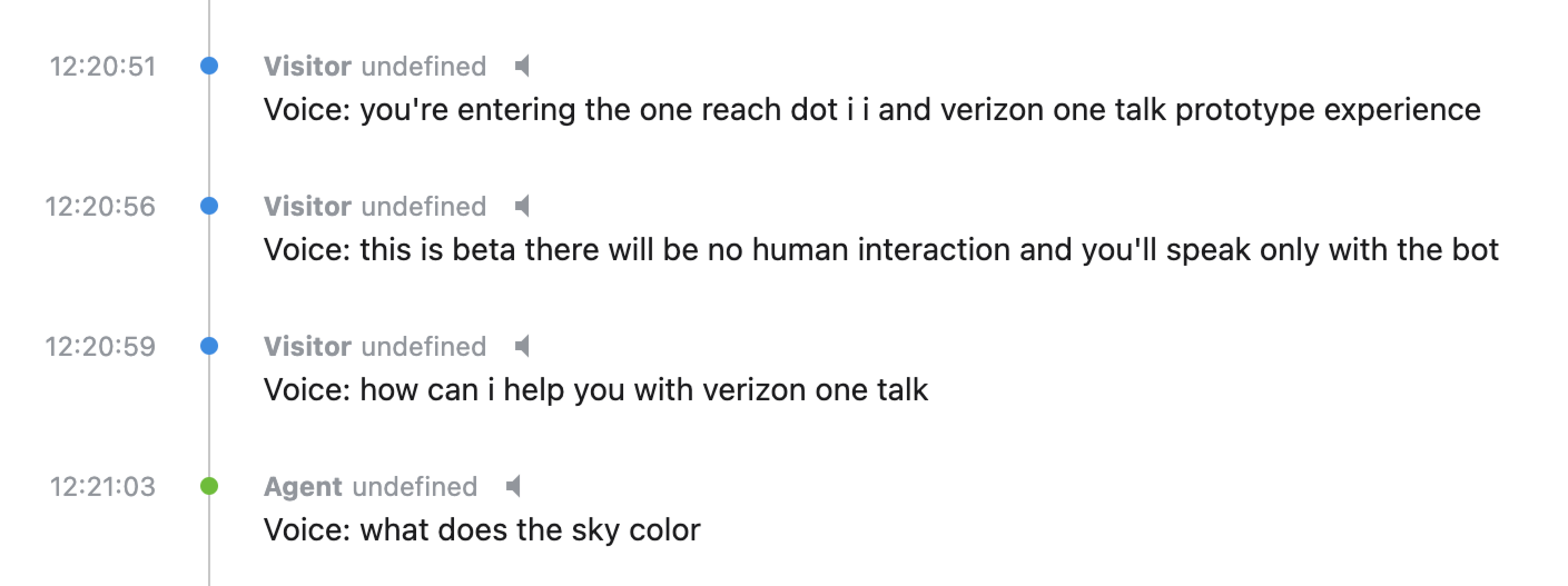
Transcript Default (text):

Transcript Call Start and Transcript Call End:

Transcript Conference Join and Transcript Conference Leave:

Transcript DTMF Tone pressed:

ExecutionTime event is ignored (hardcoded in the Enable HitL Step)
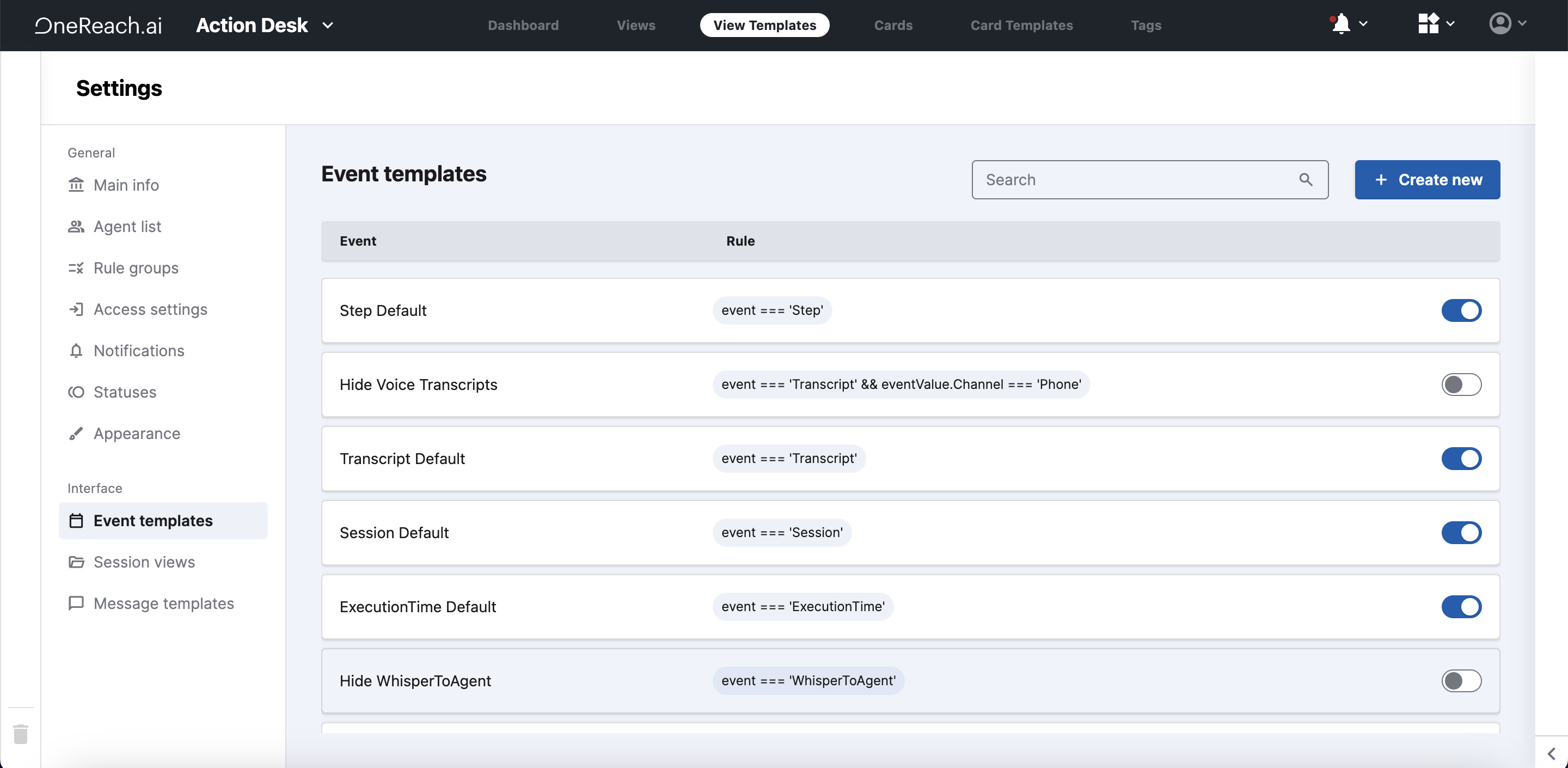
Session views
Configure which sessions agents can see and switch between in the Agent UI.
Create new views or use the following default ones:
- Active conversations: see all active conversations
- All conversations: see all conversations, be it active or closed
- My conversations: see all conversations the agent was part of (ex., claimed by the agent or transferred to that agent)
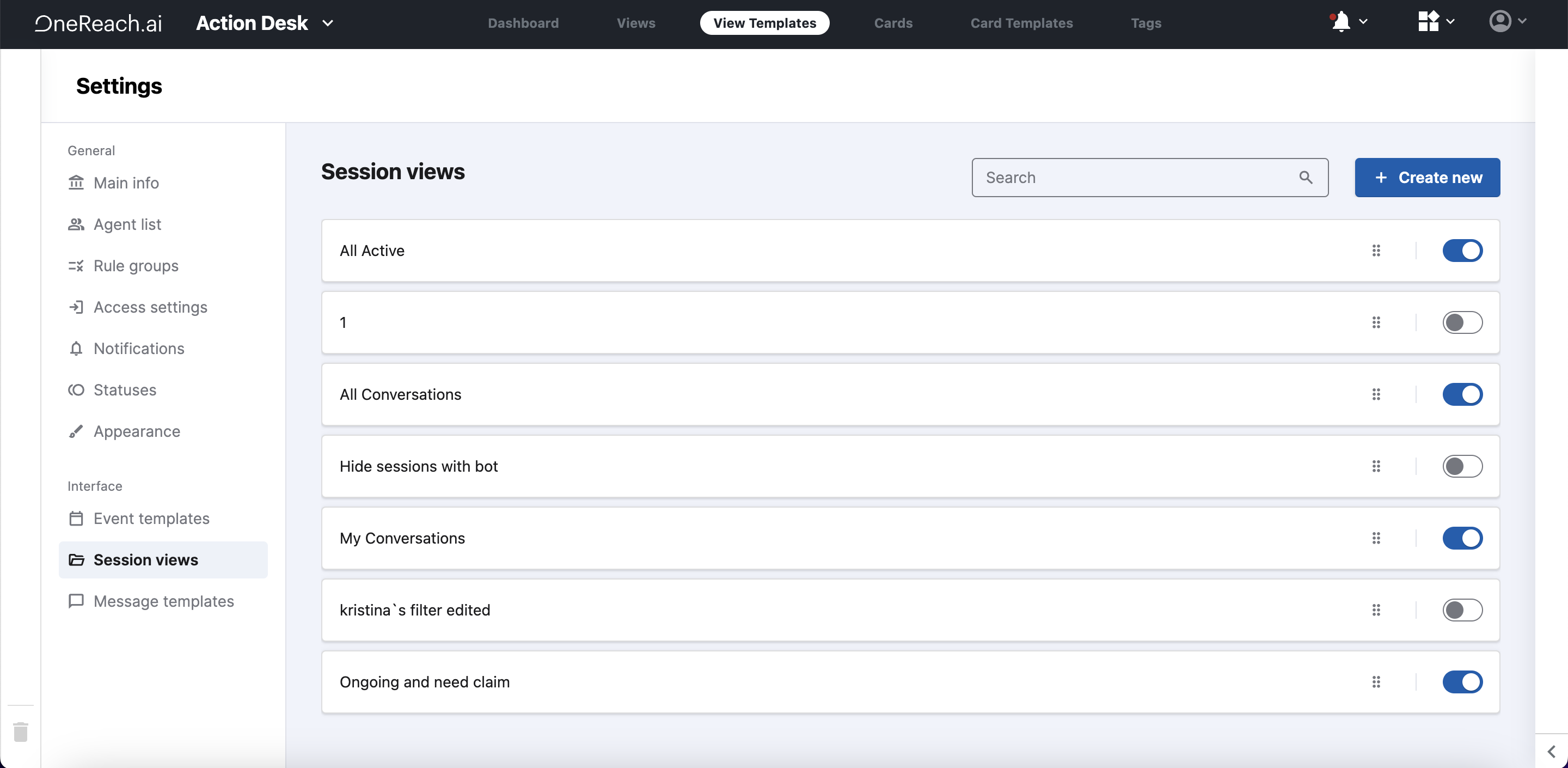
Message templates
Create message templates to streamline agents' response time. Define which templates are available for specific sessions and to particular agents using Rule groups.
Note
This setting is available only if you have configured the Process HitL Command Step in your Flow accordingly.
